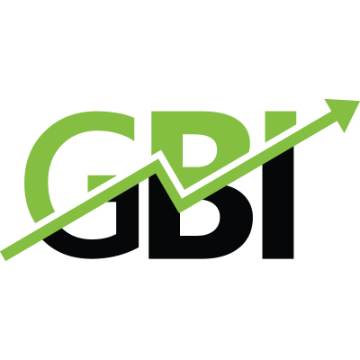Don't miss our holiday offer - up to 50% OFF!

Unlocking Advanced Power BI Techniques: Financial Analysis, Predictive Dashboards, and More
Are you tired of struggling with basic Power BI reports that barely scratch the surface of your financial data? In today’s fast-paced business world, basic analytics just won’t cut it anymore. It’s time to unlock the full potential of Power BI and revolutionize your financial analysis!
Imagine having the power to predict market trends, optimize your financial models, and create stunning interactive dashboards that not only impress your colleagues but also drive real business decisions. With advanced Power BI techniques, you can transform your raw data into actionable insights that give you a competitive edge in the financial landscape.
In this blog post, we’ll dive deep into the world of advanced Power BI techniques for financial analysis. From mastering predictive dashboards and enhancing data connectivity to leveraging AI capabilities for financial insights, we’ll cover everything you need to take your Power BI skills to the next level. Get ready to unlock the secrets of advanced DAX formulas, optimize performance for large datasets, and create reports that will leave your audience in awe. Let’s embark on this journey to becoming a Power BI financial analysis expert!
Mastering Advanced Financial Analysis in Power BI
Power BI offers robust tools for advanced financial analysis. Here are key techniques to elevate your financial reporting:
- Creating dynamic financial statements
- Implementing complex financial ratios
- Visualizing cash flow patterns
- Designing interactive budget vs. actual reports
These methods enable deeper insights into financial data, providing a comprehensive view of an organization’s financial health. By mastering these techniques, finance professionals can create more impactful and actionable reports.
Building Predictive Dashboards for Financial Forecasting
Predictive dashboards in Power BI revolutionize financial forecasting by integrating machine learning models and time series analysis. These tools enable:
- Accurate revenue predictions
- Risk assessment visualization
- Scenario planning capabilities
By leveraging these advanced techniques, financial analysts can create dynamic dashboards that provide real-time insights and empower data-driven decision-making in the ever-changing financial landscape.
Enhancing Data Connectivity for Comprehensive Financial Insights
Connecting to multiple financial data sources
Power BI excels in connecting to various financial data sources, including databases, cloud services, and APIs. Key sources include:
- SQL Server for transactional data
- SAP for ERP information
- Salesforce for CRM data
- Excel spreadsheets for ad-hoc analysis
Real-time data integration strategies
Implementing real-time data integration ensures up-to-date financial insights. Strategies include:
- Using DirectQuery for large datasets
- Leveraging Power BI’s streaming datasets
- Implementing incremental refresh for efficient updates
These approaches enable timely decision-making based on the latest financial information.
Advanced DAX Formulas for Financial Modeling
Creating custom financial KPIs
DAX formulas empower financial analysts to craft bespoke KPIs tailored to specific business needs. By leveraging functions like CALCULATE and FILTER, you can create complex metrics that provide deep insights into financial performance. Some essential custom KPIs include:
- Return on Invested Capital (ROIC)
- Economic Value Added (EVA)
- Cash Conversion Cycle
- Working Capital Ratio
Implementing time intelligence functions
Time intelligence functions in DAX enable sophisticated time-based analysis, crucial for financial modeling. These functions allow you to compare periods, calculate year-to-date totals, and perform rolling calculations. Key time intelligence functions include:
Optimizing Power BI Performance for Large Financial Datasets
When dealing with large financial datasets in Power BI, performance optimization is crucial. Here are key strategies to enhance your Power BI reports:
- Implement incremental refresh to update only new or modified data
- Design efficient data models by reducing table sizes and optimizing relationships
- Utilize aggregations for faster analysis of summarized data
- Optimize DAX queries by simplifying calculations and using appropriate functions
These techniques will significantly improve the speed and responsiveness of your Power BI reports, enabling more efficient financial analysis and decision-making.
Creating Interactive and Insightful Financial Reports
Interactive financial reports in Power BI transform raw data into actionable insights. By implementing drill-through capabilities, users can dive deep into specific financial metrics, uncovering trends and anomalies. Dynamic formatting based on thresholds highlights critical financial indicators, enabling quick decision-making.
Executive-level summaries provide a bird’s-eye view of financial performance, while bookmarks guide stakeholders through a compelling financial narrative. Key features include:
- Drill-through reports for granular analysis
- Threshold-based dynamic formatting
- Concise executive summaries
- Bookmark-driven financial storytelling
Leveraging Power BI’s AI Capabilities for Financial Insights
Power BI’s AI capabilities offer powerful tools for financial analysis. Key influencers visual helps identify crucial factors driving financial outcomes, while decomposition trees enable detailed variance analysis. Smart narratives automate financial commentary, saving time and providing data-driven insights.
These AI features enhance financial decision-making:
- Uncover hidden patterns in financial data
- Quickly pinpoint areas for improvement
- Generate automatic reports with key findings
- Streamline financial analysis processes
Power BI has proven to be an indispensable tool for financial professionals, offering a wide array of advanced techniques to elevate financial analysis, forecasting, and reporting. From mastering complex financial analyses to building predictive dashboards and leveraging AI capabilities, Power BI empowers users to unlock deeper insights and make data-driven decisions with confidence.
By implementing these advanced Power BI techniques, financial analysts and decision-makers can streamline their workflows, enhance data connectivity, and create more impactful, interactive reports. As the financial landscape continues to evolve, staying ahead of the curve with these powerful tools will be crucial for success. Embrace the full potential of Power BI to transform your financial analysis and drive your organization towards greater efficiency and profitability.

